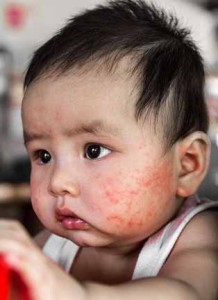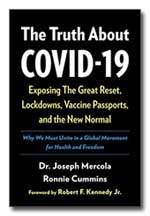 One of the scientists at Novartis Pharmaceuticals, Kristjan Kehler, studied the medical records of more than 43,000 children with eczema. He found that they were far more likely than those without it to later receive a diagnosis of ADD. Moreover, people with eczema are also prone to suffer from asthma.
One of the scientists at Novartis Pharmaceuticals, Kristjan Kehler, studied the medical records of more than 43,000 children with eczema. He found that they were far more likely than those without it to later receive a diagnosis of ADD. Moreover, people with eczema are also prone to suffer from asthma.
This information was presented at the 61st annual meeting of the American Academy of Dermatology. The doctors attending found the information interesting, but puzzling.
But the connection between ADD, eczema and asthma does not seem so mysterious when you consider that all of these conditions can be brought on by exposure to certain synthetic food additives.
The Diet Connection
The diet Dr. Feingold used as Chief of Allergy at Kaiser Permanente in California was based on an earlier diet developed at the Mayo Clinic by Stephen Lockey. It was frequently used for general allergies and asthma when triggers were unknown.
The very first patient recognized as having improved behavior because of a dietary change was a woman in her 40s who came to Kaiser Permanente suffering from acute giant hives around her eyes. Dr. Feingold tested her for allergies, but all tests were negative. Then, to test the possibility that food colors and flavors were a factor, he put her on a diet that eliminated them. Her hives vanished within 72 hours.
Ten days later …
Dr. Feingold received a phone call from the Center’s chief of psychiatry, asking, “What did you do with that patient?” It turned out that the woman had been in psychotherapy for about two years; she was hostile and aggressive, unable to get along with anyone at home or at work. In less than two weeks on the diet, her behavior had become quite normal. Dr. Feingold writes in Why Your Child is Hyperactive, “Since we had no previous experience or knowledge of a behavioral disturbance induced by artificial colors and flavors, I became curious and alerted the staff to look for similar situations.”
And that was the beginning of what later came to be known as the Feingold Diet.
One may wonder how this lady came to be almost 40 years old before needing psychotherapy for her hostility; why didn’t she get hives earlier? Or why weren’t they more serious when she was a child? It is important to look at the dates. Her first appointment with Dr. Feingold was in the summer of 1965. Although products with artificial colors and flavors were available even before World War II, they were introduced relatively slowly; it was in 1964 that the first Lucky Charms cereals with colored marshmallow pieces were sold. Kool-Aid was another common source of artificial colors and flavors which – by 1953 – was selling a million packets a day. This is not so much when you remember that the U.S. population at that time was over 160 million people. Although Tang was first introduced as a breakfast drink in 1957, its sales didn’t take off until after it was used on space flights beginning in 1965. By the mid-1960s, when this lady sought out Dr. Feingold, the use of food additives had increased significantly.
In his book, Why Your Child is Hyperactive, published in 1974, Dr. Feingold comments on page 21 on the evidence favoring additives as a cause of the recent rise in what he called H-LD (Hyperactivity – Learning Disability). He writes:
“Most of the synthetic additives, aside from colors, were less than thirty-five years old. Could the mass of convenience foods, the great tangle of additives, have anything to do with the recent alarming incidence of H-LD?”
“There seemed to be circumstantial evidence. A Standard & Poor’s graph projecting the dollar-value increase in artificial flavors looked very much like a graph indicating the rising trend of H-LD for the same period. A soft-drink graph displayed a certain parallel to the increased incidence in hyperactive children, and the synthetics were often used in the soft beverages.”




















